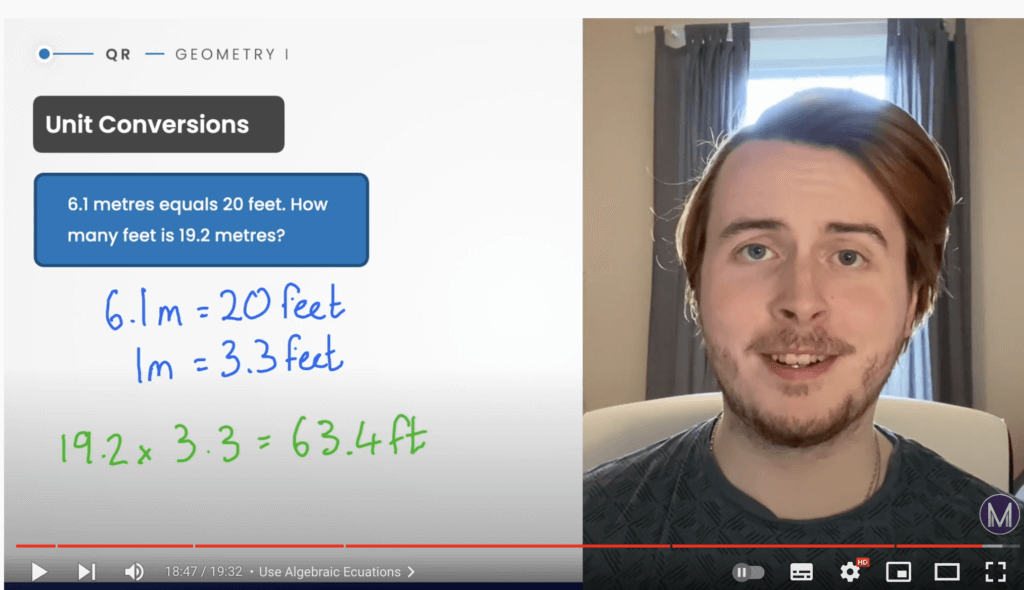A Step-by-Step Guide to Section Two of the Physics Admission Test
As Prof. Thomas Povey of University College once wrote,
“In practically every country that has an established higher education system, the most competitive universities operate some kind of admissions test or interview. These generally have only one object: to distinguish from many brilliant applicants those with the greatest potential. To test this potential, questions are often designed to test an applicant’s ability to think creatively. In many countries, these pre-university tests are set by university professors. Whilst the questions might reference a particular high-school syllabus, they would not normally be constrained by it. The questions are often deliberately off-beat. This is to see if applicants can apply what they have already learnt in new and more challenging situations. The questions test the applicants’ ability to pick an unusual problem apart, reduce it to its essential components, and use standard tools to solve it.”
Povey (2015),
Professor Povey’s Perplexing Problems:
Pre-University Physics and Maths Puzzles with Solutions
Any applicant can have a brilliant chance at making it into Oxford to study Physics, Engineering, Material Sciences, or other similar disciplines. It just takes dedication and preparation.

Introduction
Section Two of the Physics Admissions Test (PAT) is a long-answer section, comprising over three quarters of the marks of the full exam. The PAT, as explored here Section 1 is very time-pressured. There is an allocation of about 1.2 minutes per mark. This means that preparing for the format of the exam, as well as the complexity of the questions, is paramount to scoring highly. It is also important for securing an interview.
A short analysis of the previous statistics report is given in the previous article on Section 1 of the PAT. In the previous year, candidates that scored upwards of 65% on the PAT were offered an interview. This standard is consistent throughout previous years. The first thing to remember is that the PAT is such that no one can score full marks. Most offer holders scored in the 60-80% range. A score of 75% is a reasonable ambition for any applicant to work towards as they complete past papers.

General Advice on Section 2 PAT
- Use Past Papers and PAT Resources. Within the Oxford admissions process, an entrance test score is the first challenge for any applicant. PAT past papers are by far the best tool to be used in preparation for the PAT. They give familiarity with the question styles. They also allow for practising under exam conditions, and most effectively highlight areas of strength and weakness. Furthermore, you should utilise different physics aptitude test preparation resources such as physical preparation podcasts, physics aptitude test past papers and more!
- Write your working. The admission tutors at Oxford wish to see how applicants think. A student’s logic and thought processes are preeminent in showing a tutor how they might adapt and overcome newfound problems during their studies at university.
- Do what you can. With the Physics Admission Test having such an emphasis on time-management, it is important to skim over questions that aren’t fully understood. This will also enable you to gain marks where possible. Once all marks within reach are attained, a student may always return to harder questions that they have flagged.
- Check the syllabus. Consider our breakdown of the PAT Section 2 syllabus, to lend a revision framework upon which to build more areas of academic strength.
- Keep calm and focused. This cliche piece of advice is far easier said than done. But the PAT is meant to challenge and intrigue students who are interested in physics. A student who has prepared to the best of their ability is more likely to stay level-headed in the final exam.

PAT Section 2: Exam Technique
Section 2 PAT contains longer and more complex questions than the previous section. Moreover, the marks allocated to it are weighted to reflect this. Furthermore, the PAT has a very peculiar way of phrasing its questions to further test applicants’ abilities.
By far, the best way to become better at PAT Section 2 is to practise sample questions. Sitting past papers, and simulating exam conditions, is also the most effective way at familiarising oneself with the exam.
In addition to this physics aptitude test past paper solutions are released by Oxbridge Mind, which can be used to check answers when completing mocks, or even to assist when stuck. Exemplar physics aptitude test past papers solutions might also be used as a reference for streamlining an approach to particular question types, as speed is a predominant factor in Section 2 PAT success and Oxford Physics admission.
Consistency in one’s preparation is also of utmost importance – simultaneously doing physics aptitude test past papers, studying syllabus content, managing other academia, and maintaining self-care is a cumbersome task. A regular schedule can help alleviate any organisational worries, and make persevering far easier. It is recommended to have a well-defined revision timetable, sleep schedule, and clear goals to aim towards – one of which is inevitably to receive an Oxford Physics offer!
Finally, self-confidence is a major factor in the Oxford Physics application process, both in the exam hall and in the latter stage, at the interview. Doubt can be conquered through the aforementioned strategies – repetitive practice and consistent improvement will build confidence in anyone.
Conclusion
In conclusion, any applicant wishing to do well in the Oxford Physics and Engineering entrance process must practise consistently in the buildup to the application season and admission test. Section 2 PAT is truly about becoming accustomed to the formatting and creative methodology of these complex long-answer questions.
By utilising the physical preparation preparation resources, physical preparation podcasts, physics aptitude test past papers and advice provided by OxbridgeMind, a prospective applicant is in good stead to be fully prepared for the Oxford admission process.
For more information on the PAT, consider this article about Section 1 or speak to our PAT experts.



